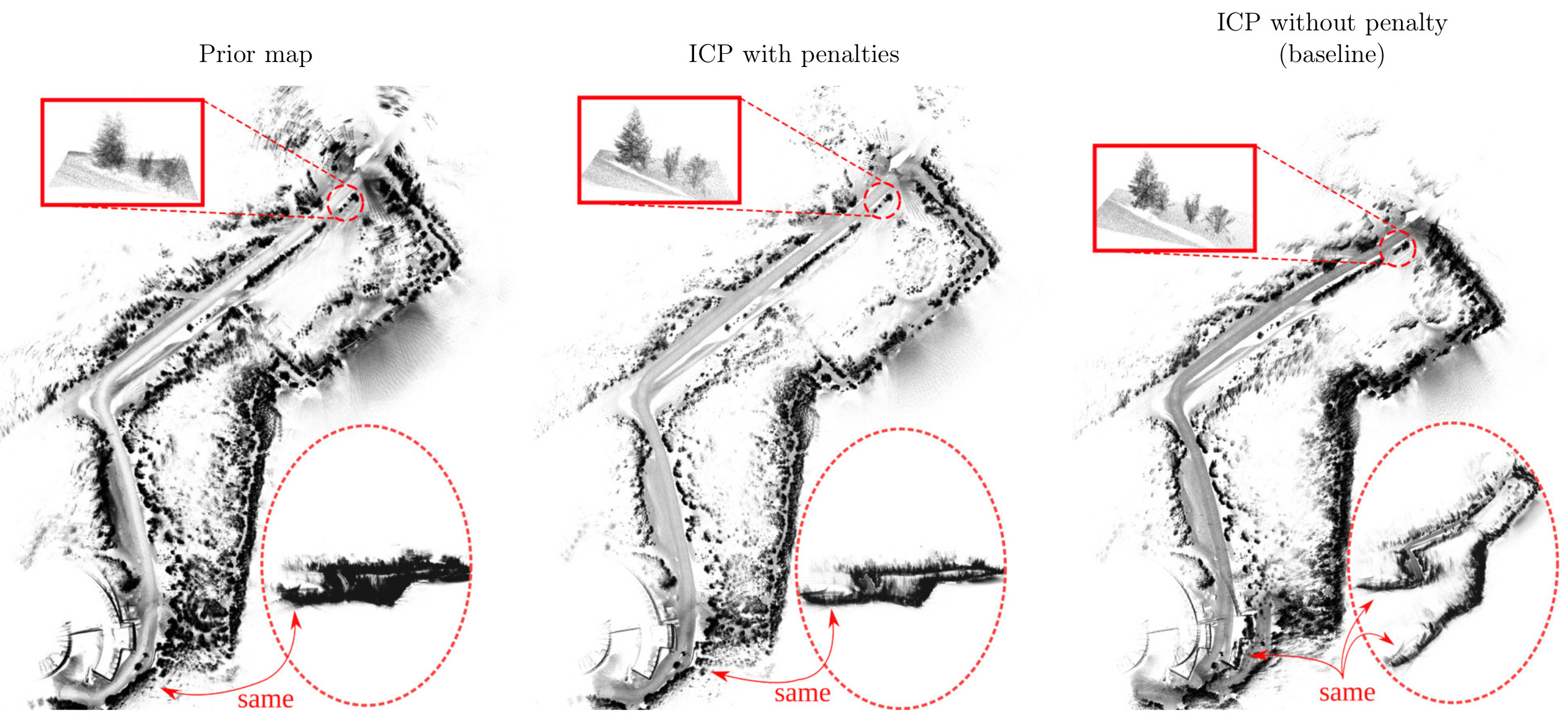The ability to map challenging subarctic environments opens new horizons for robotic deployments in industries such as forestry, surveillance, and open-pit mining. In this paper, we explore possibilities of large-scale lidar mapping in a boreal forest. Computational and sensory requirements with regards to contemporary hardware are considered as well. The lidar mapping is often based on the SLAM technique relying on pose graph optimization, which fuses the Iterative Closest Point (ICP) algorithm, Global Navigation Satellite System (GNSS) positioning, and Inertial Measurement Unit (IMU) measurements. To handle those sensors directly within the ICP minimization process, we propose an alternative approach of embedding external constraints. Furthermore, a novel formulation of a cost function is presented and cast into the problem of handling uncertainties from GNSS and lidar points. To test our approach, we acquired a large-scale dataset in the Foret Montmorency research forest. We report on the technical problems faced during our winter deployments aiming at building 3D maps using our new cost function. Those maps demonstrate both global and local consistency over 4.1km.
Quick facts:
- 4.1 km of untapped forest trail and snowmobile was mapped using a custom acquisition platform
- The acquisition platform has a Xsens MTI-30 IMU, a RoboSense RS-lidar-16 and a REACH RS+ GNSS station
- All of field test were done at Forêt Montmorency, a research forest owns by Université Laval.
- Our paper is available here
- It was presented at the 12th Conference on Field and Service Robotic, the slides are available here
Video
Publications
- Babin, P., Dandurand, P., Kubelka, V., Giguère, P., & Pomerleau, F. (2019). Large-scale 3D Mapping of Subarctic Forests. Proceedings of the Conference on Field and Service Robotics (FSR). Springer Tracts in Advanced Robotics.
PDF Slides Bibtex source
